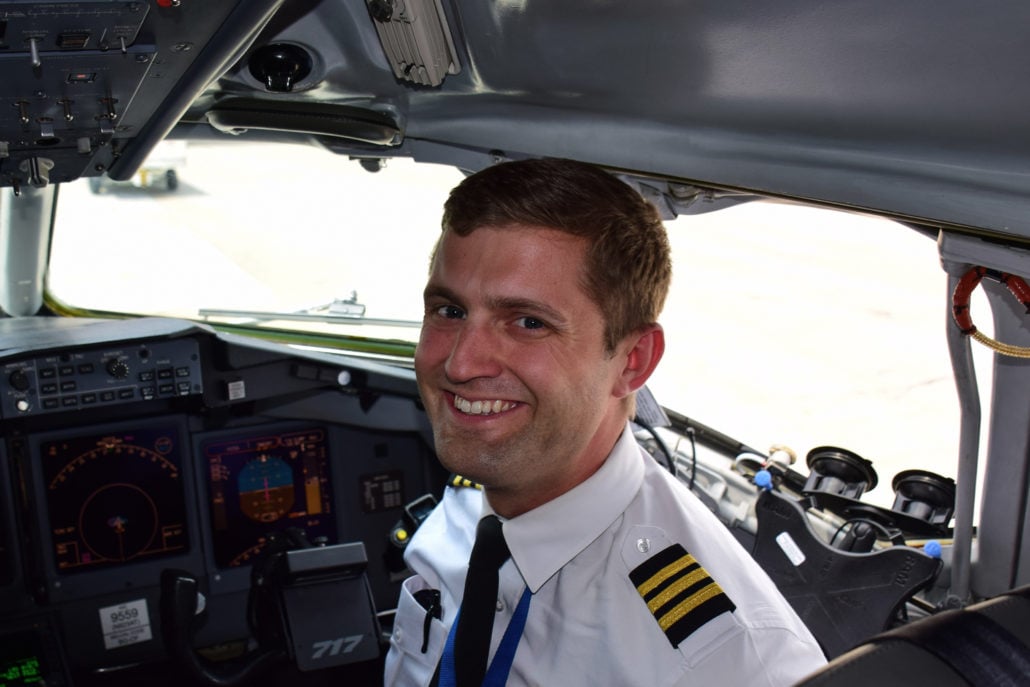
In our Ask a Pilot series, pilot Spencer Marker answers one of your aviation-related questions each week. See past installments here and submit your own to whitney@johnnyjet.com.
The question
Couldn’t the airlines come up with some coating for windshields of airplanes to prevent the dangerous laser beams from bothering the pilot’s eyes?
—Barb D
The answer
Hey Barb! This is something that myself and my fellow crewmembers are acutely aware of and similarly frustrated by. So I’m glad I get the chance to discuss this problem and what is being done to combat it.
The reality of lasers and airplanes
Unfortunately, laser attacks against aircraft are on the rise. The reason for this rise is hard to nail down definitively, but these irresponsible individuals seem to be emboldened by the ease with which lasers can be purchased.
Laser encounters for pilots aren’t just a nuisance. While there have been no accidents attributed directly to these events, they are disorienting to the flight crew and can even injure the eyes of crewmembers exposed to the flash. Pilots exposed to lasers report flash-blindness, afterimages (where the spot of illumination is still visible after the flash is gone) and disorientation. Others report more serious eye issues ranging from retinal damage to retinal burns and persistent dark spots near the center of vision. Most of these encounters occur low to the ground during what we refer to as “critical phases of flight” (takeoff and landing). And these encounters are increasing (from just 384 in 2006 to 3894 by 2014).
The current FAA recommendations
So what is the aviation community doing about this? The FAA takes these incidents very seriously and has created several channels pilots can use to report laser encounters. After a call to air traffic control immediately following the incident (to warn other pilots), the FAA has created an online “Laser Beam Exposure Questionnaire” where pilots can submit a report on their specific encounter after they have landed. The data collected will help eradicate this issue and bring those individuals perpetrating these attacks to justice. And penalties for these offenses are stiff, including up to five years in prison.
Right now, pilots exposed to laser light are advised to simply look away from the light as soon as possible. We are discouraged from trying to locate the source of the light, as that makes us vulnerable to additional exposure. Using the autopilot to control the airplane’s flight path during the encounter is also recommended. Finally, the FAA advocates adjusting the aircraft’s cockpit lighting to full bright in order to acclimate the pupil of the eye to bright light if a laser encounter is anticipated.
Anti-laser windshield coatings
And while the airlines are working with the FAA to report these encounters, currently, no airline employs anti-laser technologies on their aircraft. However, Airbus has been working with Canadian firm Lamda Guard on developing and testing an anti-laser film that can be applied to airplane windshields. Their “metaAir” film can be applied to windows adhesively, and uses materials engineered to reflect one or more colors of laser flash without impeding normal vision. The development of this technology is promising in the fight against aircraft laser incidents. And while the FAA does not yet require airlines to apply this technology to their aircraft, the regulatory process does take time. It would not surprise me if in the next few years this technology becomes a common addition to aircraft windshields.
Laser eyewear
In addition, Sperian Protection has developed Laser-Gard Eyewear. These high-tech specs are worn like eyeglasses and protect a pilot’s eyes from red and green lasers. In addition, several other manufacturers—such as Laservision USA and Thor Labs—make eyewear that performs a similar function. While the FAA is currently aware of these products, like the windshield film, there is no rule requiring pilots to use them at this time. However, pilots are free to bring along their own set, if they would like.
To sum up
Right now there exists technology used to combat laser exposure incidents and protect the flight crew. Regulators and airplane manufacturers are in the process of evaluating these technologies and determining if their application in airline aircraft makes logical and regulatory sense. For now, the techniques endorsed by the FAA—along with their data collection system and strong penalties for the perpetrators—has created a safety framework to drive down the occurrences of these events. The addition of anti-laser film or eyewear would simply be another layer of safety to combat these senseless encounters.
Thanks for the question, Barb! If anyone has a burning aviation question or something you would like cleared up, drop us a line at Whitney@johnnyjet.com to get your question featured in an upcoming “Ask a Pilot” column.
Clear skies and tailwinds,
—Spencer




